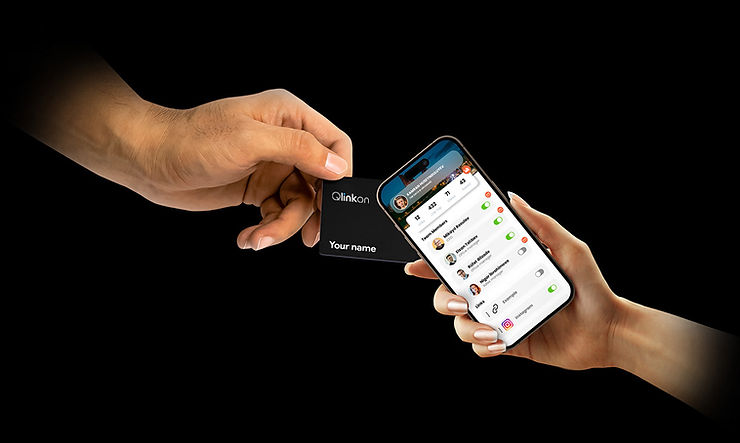
When you hear “contactless,” what comes to mind? In the wake of the COVID-19 pandemic, maintaining physical distance from others has become essential, thrusting contactless technology into the spotlight. But what exactly is contactless technology, how does it work, and what are its various applications? Let’s delve into these questions and explore the fascinating world of Near Field Communication (NFC).
Contactless Payments and Beyond
For many, the first interaction with contactless technology is through contactless payments. With a simple tap or swipe of a smartphone, you can complete transactions without cash or a physical credit card. This method offers unmatched convenience and security while reducing physical contact, aligning perfectly with social distancing practices.
However, contactless technology encompasses more than just payments. The backbone of this technology is NFC, which enables various innovative applications across different industries. Let’s break down what NFC is and how it powers these diverse use cases.
Understanding Near Field Communication (NFC)
Near Field Communication, or NFC, allows two devices to communicate when they are close to each other. Typically, at least one device has an NFC chip powered by a source such as a smartphone. The other device can be another mobile device, an NFC tag, or an NFC-embedded product. These interactions can trigger the transfer of marketing content, data, or other relevant information, opening a new realm of digital communication.
The Origins of NFC
NFC technology evolved from earlier wireless communication methods such as RFID (Radio Frequency Identification) and barcodes. Unlike these predecessors, NFC offers unique advantages, especially with the widespread adoption of smartphones equipped with NFC capabilities. This innovation has paved the way for numerous applications, enhancing both consumer and business experiences.
How NFC Works
NFC operates on wireless communication principles, using radio waves to transmit information. This technology leverages electromagnetic induction via two loop antennas, enabling data exchange between NFC-enabled devices. Unlike other wireless technologies like Bluetooth and Wi-Fi, NFC can activate the electric currents of passive components, allowing for varied applications.
NFC functions in three primary modes:
- Peer-to-Peer (P2P): Facilitates ad-hoc data exchange between two NFC-enabled devices.
- NFC Card Emulation: Transforms devices like smartphones into smart cards, enabling contactless payments and ticketing.
- NFC Reader/Writer: Allows NFC-enabled devices to read data from passive NFC components like tags and products.
The Versatility of NFC Applications
While contactless payments are the most recognized use of NFC, the technology’s potential extends far beyond this. Here are some intriguing ways NFC is utilized across various sectors:
Marketing Innovations
The introduction of NFC-enabled devices has revolutionized marketing. NFC tags can be embedded in a wide array of objects, from magazine pages and posters to keyrings and beer mats. With a quick swipe of a smartphone, users can access product information, media downloads, or social media prompts. This seamless interaction creates endless opportunities for creative marketing campaigns.
For instance, print advertisements can include NFC tags inviting readers to participate in contests or access additional content. Branded giveaways at events can feature NFC pens that double as digital business cards. NFC smart posters for upcoming films can provide cinema times and trailer videos directly to a user’s device. These examples illustrate the limitless potential of NFC in marketing, driven by marketers’ creativity.
Efficient Monitoring
Many organizations require some form of monitoring, and NFC proves to be a game-changer in this regard. Employee time tracking in commercial, industrial, and retail environments can be managed contactlessly. Employers can monitor employee movements, machinery usage, and site attendance efficiently.
In healthcare, NFC streamlines operations by tracking hospital bed availability and locations, reducing errors, and saving time. Carers can also track and verify visits automatically, enhancing patient care management. NFC’s ability to provide accurate, real-time data makes it invaluable for monitoring applications.
Product Authentication
NFC is an excellent tool for product authentication, benefiting both consumers and retailers. Luxury goods, like designer handbags and high-end watches, often include NFC tags to verify authenticity through official manufacturer apps. This helps consumers ensure they are purchasing genuine products and protects retailers’ reputations.
High-value items such as white goods (fridges, freezers, microwaves, washing machines) can also be authenticated using NFC tags. These tags, often in the form of stickers, assure consumers that the products are genuine and new, enhancing trust and confidence in their purchases.
Industry 4.0 Integration
NFC plays a crucial role in Industry 4.0, the Fourth Industrial Revolution characterized by technologies like Artificial Intelligence (AI) and the Internet of Things (IoT). IoT networks consist of connected items that can transfer data to one another, with NFC serving as a binding technology. This integration offers businesses across multiple industries the opportunity to increase operational efficiency.
For example, factory site managers can track stock levels and locations in real time, thanks to NFC-enabled IoT systems. The UK government’s investment in AI and electric vehicle infrastructure includes NFC components, such as the “Tap to Charge” system for electric cars. NFC enables seamless communication in these advanced technological ecosystems, driving innovation and efficiency.
Conclusion
While contactless payments might be the most familiar example of NFC technology, its applications are vast and varied. From innovative marketing strategies and efficient monitoring systems to robust product authentication and Industry 4.0 integration, NFC is a versatile and powerful technology transforming how we interact with the world.
As we continue to embrace the digital age, NFC stands out as a crucial component, enhancing convenience, security, and efficiency across numerous domains. The next time you tap your smartphone to make a payment or scan an NFC tag for information, remember the sophisticated technology working behind the scenes, revolutionizing our everyday experiences.
